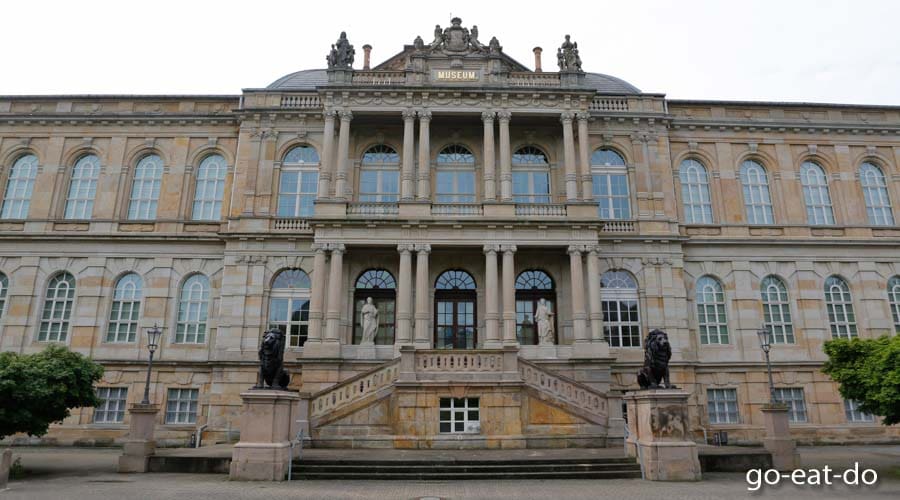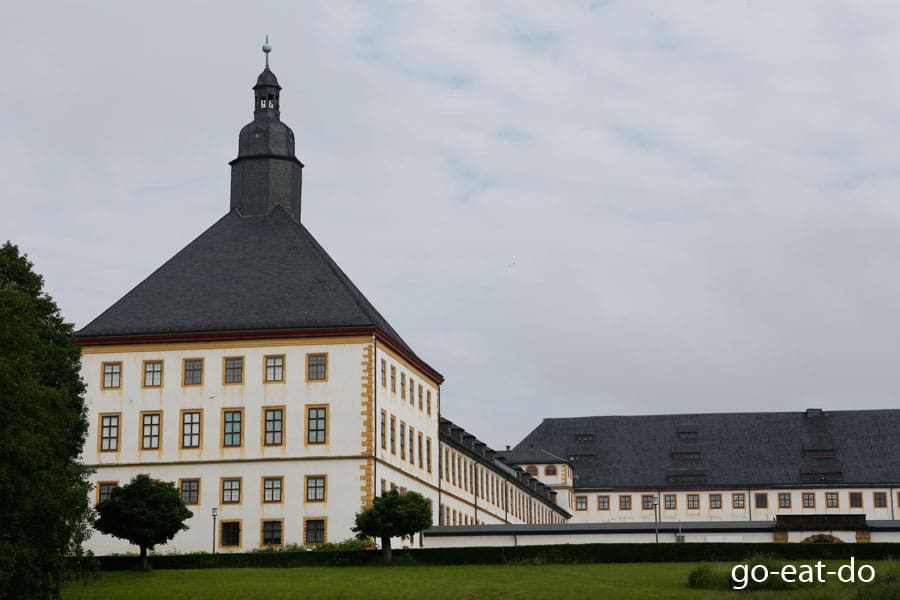Susanne Hörr works at Friedenstein Castle in the city of Gotha in Thuringia, Germany.
The city has historic associations with Britain’s royal family. Prince Albert of Saxe-Coburg and Gotha married Queen Victoria, so is the great-great-grandfather of Queen Elizabeth II. Until 28 August 2016 you can find out more about those transnational connections by visiting the Castle Museum’s exhibition, The Ernstines: A Dynasty Shapes Europe.
Susanne answers our questions, giving an introduction to Gotha and some of the things to do and see in the city:
Why do you think people should visit Gotha?
First off, Friedenstein Castle is striking. It’s on a hill, so everybody sees it.
Then there’s the Ducal Museum, which belongs to it.
I don’t just say that because I work there. It’s a wonderful place, where dukes and princes lived for more than 400 years and built a collection of artworks—it’s genuinely beautiful.
People should definitely walk down into the city too. It’s worth looking around and exploring, not just heading to the Rathaus (the town hall) on the Hauptmarkt (the main marketplace). The Butter Market is also worth a visit, along with a handful of locations that aren’t part of the historic city centre.
It’s really beautiful when you walk in a westerly direction. There are tennis courts and you can enjoy vistas from a scenic viewing point. There’s a lovely pub and the landscape is adorable—apple trees grow there.

What is your favourite place in the town?
My favourite place is Schlosspark (Castle Park). I walk there every morning on my way to work. There are some great ducks—they’re a bit crazy. They sit in the trees rather than on the water. It’s beautiful there.
It is the oldest English-style landscaped park in Germany. A man came from Kew Gardens to design it.
If you were going to take a guest to lunch or dinner, where would you choose and why?
I like going to the restaurant in the Augustinian monastery (Augustinerkloster Klostercafé, Jüdenstrasse 27, tel. +49 3621 302901) because it’s relatively informal and the atmosphere, under historic walls, is beautiful.
It has a lovely cloister there. It comes down to the wonderful atmosphere and the fact they serve a great tafelspitz (joint of boiled beef) with horseradish sauce. It’s super!
I always recommend the Irish Pub in town (S’Limerick Irish Pub, Buttermarkt 4; tel. 49 3621 3528014), because it has such delicious handmade chips. Maybe British people would feel at home there?

If there is a bar or cafe that you could take guests to, which would it be and why?
The Pagenhaus (Romantik-Restaurant Pagenhaus; tel. +49 3621 403612), which is situated next to the castle.
It has a beautiful beer garden and lovely food, particularly the cuisine from Thuringia. People can eat a traditional Thuringian bratwurst (grilled sausage) or, if that doesn’t appeal, a salad. The people there are very nice and it’s like sitting in a castle.
If guests can stay in the area for an extra day, what do you recommend they do and see?
After people have taken a look here they could drive to Erfurt or, further, to Weimar. They are both lovely cities and different to each other.
In the other direction, they could visit Wartburg. The countryside there is very scenic and Martin Luther translated the bible into German at Wartburg Castle.
A bit further on, at Bad Frankenhausen, there’s a panorama painting by an East German artist, Thomas Müntzer. It’s a huge, circular painting depicting the Peasants’ War of 1525. It makes a fabulous impression.
Further information
See the Gotha, Thuringia plus the Cultural Heart of Germany and Germany tourism information websites for more information.
Photos illustrating this post are by Why Eye Photography.
If you enjoyed this post why not sign up for the free Go Eat Do newsletter? It’s a hassle-free way of getting links to posts on a monthly basis.
‘Like’ the Go Eat Do Facebook page to see more photos and content.


